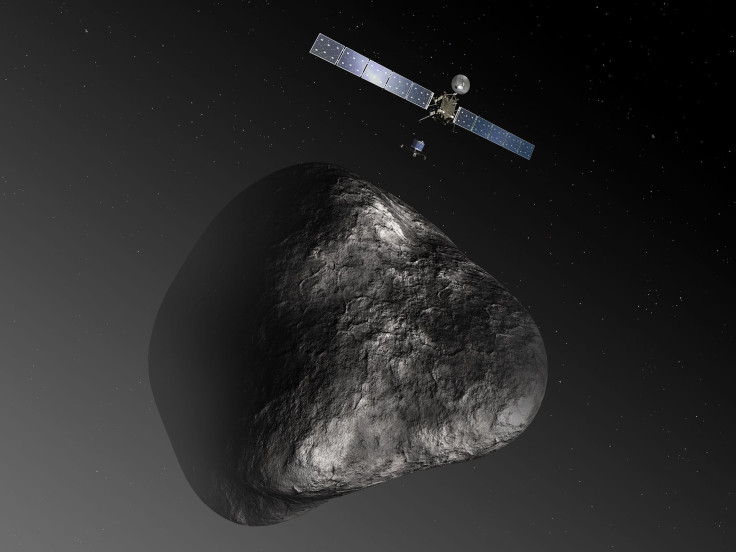ESA’s Comet-Chasing Rosetta Probe Nears Target For Wednesday Rendezvous

After travelling nearly 4 billion miles through the solar system, the Rosetta spacecraft, operated by the European Space Agency, or ESA, is gradually closing in on its target, the comet 67P/Churyumov-Gerasimenko. And, if everything goes according to plan, the spacecraft will rendezvous with the comet on Wednesday.
Launched on March 2, 2004, Rosetta will orbit 67P for 17 months, during which it will study the comet to determine how icy space rocks alter their paths while traversing the inner solar system. The spacecraft is also scheduled to drop a lander called “Philae” onto 67P’s nucleus in November to collect samples and take the first-ever photos from the surface of a comet.
“For the first time, we will rendezvous with a comet, for the first time we will escort a comet as it passes through its closet approach to the sun and — the cherry on the top — for the first time, we will deploy a lander,” Matt Taylor, a Rosetta project scientist, told Space.com via email. “The rendezvous is therefore a key milestone in the mission.”
Last week, Rosetta made its first temperature measurements of 67P and found that the comet is too hot to be covered in ice, and therefore must have a dark, dusty coating.

The scientists used Rosetta’s visible, infrared- and thermal-imaging spectrometer, called VIRTIS, to determine that the comet’s average surface temperature is about -94 degrees Fahrenheit, which is some 68 degrees to 86 degrees warmer than predicted for a comet covered in ice.
While taking the measurements, the comet was approximately 344 million miles from the sun, more than three times the distance between the sun and the Earth, according to ESA.
Since its launch, Rosetta has looped around the sun five times, and picked up speed through three “gravity-assist swingbys” of Earth and one of Mars to enter an orbit that is similar to that of 67P. Rosetta’s goal is to match the pace of the comet and travel next to it.
Meanwhile, Rosetta's controllers have been trying to slow its speed with respect to the comet by about 775 miles per second, to ensure the spacecraft keeps its Wednesday meeting with the comet, ESA said.
“All the time we are looking, and sniffing the comet, and with the lander (over a shorter time period) scratching and sniffing,” Taylor said. “All this will provide us with an unprecedented view of a comet, its nucleus and coma and how this all works!”
© Copyright IBTimes 2025. All rights reserved.






















